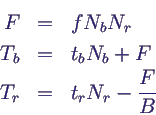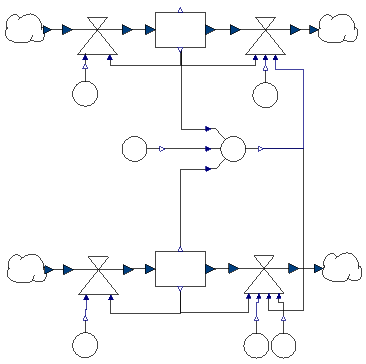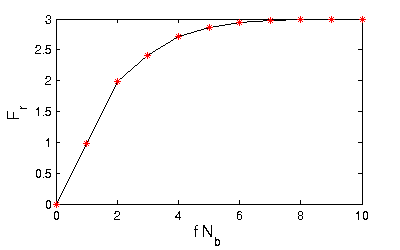Predator prey systems
- Modeling of predator and prey populations:
- state variables Nb, Nr for
number of prey and predator animals
- inflows for births, outflows for deaths
- flows like in population models
- constant birth and death rates
- number of births and deaths proportional to size
of population
- interaction between the two species
- F = number of prey hits
- proportional to Nb and Nr
- directly increases number of prey deaths Tb
- decreases number of predator deaths Tr
- demand B = number of prey animals (per time)
needed by a predator to survive
- concrete relations (Lotka-Volterra equations)
- model PredatorPrey1
- results
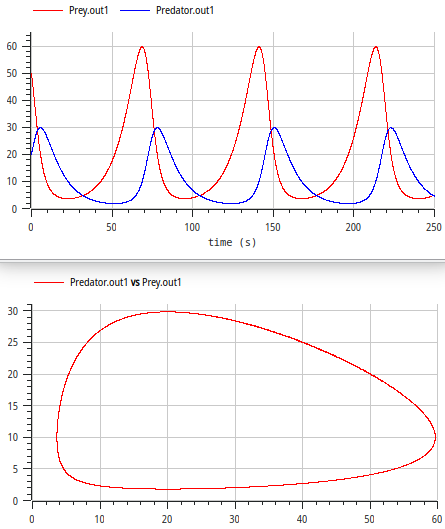
- typical oscillations
- closed loop in phase diagram ≙ constant of motion
- increase of initial number of prey animals from 50 to
500
-
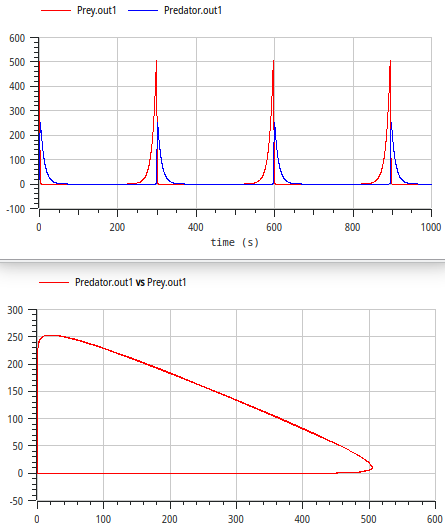
- reduce solver tolerance to 1e-8 !
- Nr rises immediately
- both populations collapse but recover after a
long time
- very steep oscillations
- still a closed loop in phase diagram
- very unnatural behaviour!
- problem
- number of catches per predator Fr = F
/ Nr = f Nb rises with Nb
- idea: limit Fr to a saturation value Fr,max
- Functions defined by graphs:
- saturation curve Fr = sat(f Nb)
known only qualitatively
- defined explicitely by a set of points and
linear interpolation
- implemented with component Mult2GraphConverter
- multiplies its inputs and applies interpolated
function to the product
- points defined in catchesPerPredator.txt
- values defined in Modelica as constant array in SystemDynamicsExamples.Resources.PredatorPrey.cpp
- Results of PredatorPrey2B:
- Nb(0) = 50 → same results as before (Fr
far from saturation)
- Nb(0) = 500
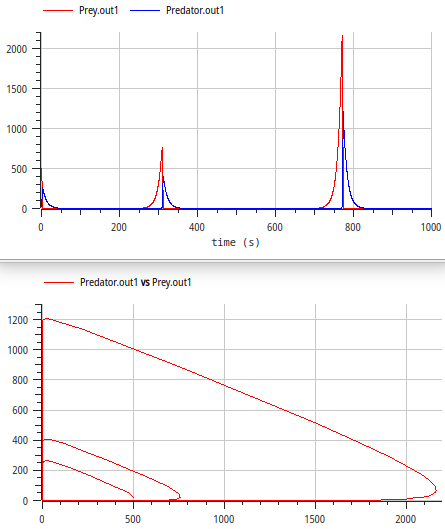
- oscillations get stronger!
- reason: Tr becomes negative
- happened already for PredatorPrey1,
but caused limited damage due to constant of motion



